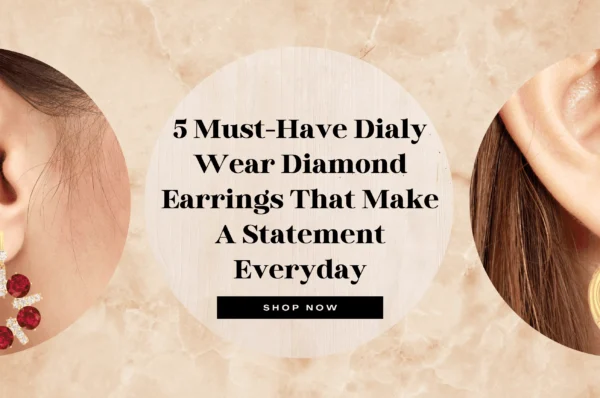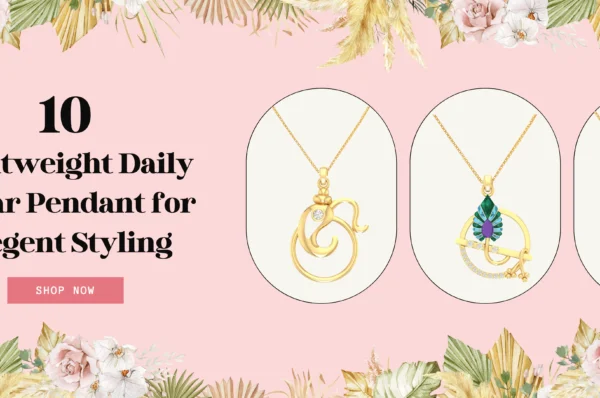Fascinating Facts About Diamonds You Didn’t Know
Introduction
Diamonds have always held a certain mystique and allure, captivating people across cultures and centuries with their brilliance and enduring beauty. Known as the hardest natural substance on Earth, diamonds have been a symbol of wealth, power, and love. At Jewelled Gems by Shikha Gupta, we celebrate the magnificence of diamonds through our carefully curated collections, each piece reflecting the timeless elegance that only diamonds can offer.
Historical Context of Diamonds
Discovery and Early Uses
Diamonds were first discovered in India around 4th century BC and were initially used as religious icons. Ancient civilizations believed diamonds to be the tears of gods or fragments of falling stars. Over time, their unique properties were recognized, and they began to be used as adornments for royalty and symbols of power.
Historical Significance in Different Cultures
In ancient Rome, diamonds were believed to bring courage and strength to the wearer. During the Middle Ages, they were thought to possess healing properties, capable of curing ailments and warding off evil spirits. In the Renaissance, diamonds became associated with love and were often included in engagement rings, a tradition that continues to this day.
Famous Historical Diamonds
Throughout history, several diamonds have gained fame due to their size, beauty, and the legends surrounding them. The Koh-i-Noor, part of the British Crown Jewels, and the Hope Diamond, renowned for its rare blue color and supposed curse, are just a couple of examples of diamonds that have captured the public’s imagination.
Formation and Characteristics
Geological Formation of Diamonds
Diamonds form deep within the Earth’s mantle under extreme heat and pressure conditions. This process takes millions to billions of years. They are brought closer to the Earth’s surface through volcanic eruptions, where they are then mined.
Physical and Chemical Properties
Diamonds are made entirely of carbon atoms arranged in a crystal lattice structure, which gives them their incredible hardness. They have a high refractive index, resulting in their characteristic sparkle and brilliance.
Types of Diamonds
There are several types of diamonds, each with unique characteristics:
- Natural Diamonds: Formed over millions of years within the Earth.
- Synthetic Diamonds: Created in laboratories and are chemically identical to natural diamonds.
- Colored Diamonds: Rare diamonds that come in various colors, such as blue, green, and pink, often caused by impurities or structural anomalies during formation.
The Diamond Industry
Major Diamond-Producing Countries
Countries such as Russia, Botswana, Canada, and Australia are among the top diamond producers globally. Each region offers unique types and qualities of diamonds, contributing to the diversity in the market.
Key Players in the Diamond Market
The diamond industry is dominated by a few major companies, such as De Beers, Alrosa, and Rio Tinto, which control a significant portion of diamond production and distribution.
Economic Impact of the Diamond Industry
The diamond industry significantly impacts global economies, providing employment and contributing to national revenues in producing countries. However, it also faces challenges related to ethical sourcing and environmental sustainability.
Diamond Mining Techniques
Traditional Mining Methods
Traditional methods include alluvial mining, where diamonds are extracted from riverbeds and beaches, and open-pit mining, where large pits are dug to reach diamond-bearing rocks.
Modern Mining Techniques
Modern techniques involve advanced machinery and technology, such as underground mining and marine mining, which allow for more efficient extraction of diamonds from challenging environments.
Environmental Impact of Diamond Mining
Diamond mining can have significant environmental impacts, including habitat destruction and water pollution. Sustainable mining practices and rehabilitation programs are essential to mitigate these effects.
The 4 Cs of Diamonds
Cut: Importance and Types
The cut of a diamond affects its brilliance and overall appearance. Common cuts include round, princess, emerald, and oval. A well-cut diamond reflects light beautifully, enhancing its sparkle.
Clarity: Grades and Significance
Clarity refers to the presence of internal or external imperfections, known as inclusions and blemishes. The clarity grade ranges from Flawless (no imperfections visible under 10x magnification) to Included (imperfections visible to the naked eye).
Carat: Measuring and Its Influence on Value
Carat weight measures the size of a diamond. Larger diamonds are rarer and thus more valuable, but the other Cs also significantly impact a diamond’s overall value.
Color: Grading Scale and Impact on Pricing
Diamonds are graded on a color scale from D (colorless) to Z (light yellow or brown). Colorless diamonds are the most valuable, but colored diamonds (e.g., blue, pink) are prized for their rarity and unique beauty.
Famous Diamonds and Their Stories
The Hope Diamond
The Hope Diamond is a 45.52-carat deep-blue diamond with a fascinating history. Believed to have originated in India, it has changed hands numerous times and is rumored to carry a curse. It is now housed in the Smithsonian Institution in Washington, D.C.
The Cullinan Diamond
Discovered in South Africa in 1905, the Cullinan Diamond is the largest gem-quality diamond ever found, weighing 3,106 carats. It was cut into several stones, many of which are part of the British Crown Jewels.
The Koh-i-Noor Diamond
The Koh-i-Noor, meaning “Mountain of Light,” is a 105.6-carat diamond with a long and controversial history. It has been owned by various Persian, Mughal, and British rulers and is currently part of the British Crown Jewels.
Other Notable Diamonds
Other famous diamonds include the Regent Diamond, known for its exceptional brilliance and clarity, and the Orlov Diamond, a large rose-cut diamond with a rich history linked to Russian royalty.
The Role of Diamonds in Jewelry
Popular Diamond Jewelry Pieces
Diamonds are used in a variety of jewelry pieces, including engagement rings, wedding bands, necklaces, bracelets, and earrings. Each piece showcases the diamond’s brilliance and adds elegance to the wearer’s look.
Trends in Diamond Jewelry Design
Current trends in diamond jewelry include minimalist designs, vintage-inspired pieces, and unique settings that highlight the diamond’s beauty. Customizable jewelry options are also gaining popularity.
The Process of Crafting Diamond Jewelry
Crafting diamond jewelry involves several steps, including designing, selecting the diamond, cutting and polishing, setting the diamond, and final inspection. Each step requires skill and precision to ensure the highest quality.
Diamonds as Investment
Economic Value and Appreciation
Diamonds can be a valuable investment, often appreciating over time. Their rarity and enduring appeal make them a solid choice for diversifying an investment portfolio.
Comparing Diamonds to Other Investments
When compared to other investments like gold, real estate, or stocks, diamonds offer unique benefits. They are portable, durable, and can be easily passed down through generations. However, they require careful consideration regarding quality, certification, and market trends to ensure a good return on investment.
Tips for Investing in Diamonds
- Certification: Always purchase diamonds that come with a certification from a reputable gemological laboratory, such as GIA or AGS.
- Quality Over Quantity: Focus on the 4 Cs and opt for higher-quality diamonds rather than larger but lower-quality stones.
- Market Research: Stay informed about market trends and prices.
- Long-Term Investment: Be prepared to hold onto your diamonds for several years to see significant appreciation.
- Professional Advice: Consult with diamond investment experts to make informed decisions.
Ethical Considerations in the Diamond Trade
Conflict Diamonds and Their Impact
Conflict diamonds, also known as blood diamonds, are diamonds mined in war zones and sold to finance armed conflict against governments. This has led to severe human rights abuses and environmental degradation.
Efforts to Promote Ethical Sourcing
The Kimberley Process Certification Scheme (KPCS) was established to prevent the trade of conflict diamonds. It ensures that diamonds are ethically sourced and conflict-free. Many companies also adhere to strict ethical guidelines to promote responsible mining practices.
Certifications and Regulations
Look for diamonds that are certified by organizations committed to ethical sourcing. The Responsible Jewellery Council (RJC) and the World Diamond Council are key players in promoting transparency and ethical practices in the diamond industry.
Technological Innovations in the Diamond Industry
Advances in Diamond Cutting Technology
Technological advancements have revolutionized diamond cutting, leading to more precise cuts and enhanced brilliance. Laser cutting and computer-aided design (CAD) allow for intricate designs and minimize waste.
Development of Lab-Grown Diamonds
Lab-grown diamonds, also known as synthetic diamonds, are created in controlled environments using advanced technology. They are chemically and physically identical to natural diamonds but are more affordable and have a lower environmental impact.
Future Prospects in Diamond Technology
Future innovations in diamond technology may include further improvements in lab-grown diamond quality, new cutting techniques, and enhanced traceability from mine to market. These advancements will continue to shape the industry and offer more sustainable options.
Cultural Significance of Diamonds
Diamonds in Mythology and Folklore
Throughout history, diamonds have been surrounded by myths and legends. Ancient Greeks believed diamonds were the tears of gods, while Romans thought they were splinters from falling stars. In Hindu mythology, diamonds were believed to protect the wearer from evil.
Symbolism in Different Cultures
In many cultures, diamonds symbolize purity, strength, and eternity. They are often associated with love and commitment, making them a popular choice for engagement rings and wedding jewelry.
Modern Cultural References
Diamonds continue to be referenced in popular culture, from Marilyn Monroe’s iconic song “Diamonds Are a Girl’s Best Friend” to their prominent role in movies like “Titanic” and “Ocean’s Eight.” They remain a timeless symbol of luxury and elegance.
Personal Stories and Testimonials
Individual Experiences with Diamonds
Many people have personal stories about their first diamond purchase or receiving a diamond as a gift. These stories often highlight the emotional significance and lifelong memories associated with diamonds.
Stories of Diamond Heirlooms
Diamond heirlooms are treasured pieces passed down through generations, carrying with them family history and sentimental value. These heirlooms are often kept for special occasions and symbolize the enduring nature of family bonds.
Testimonials from Customers of Jewelled Gems
Customers of Jewelled Gems by Shikha Gupta often share their satisfaction and joy with their diamond purchases. Testimonials highlight the quality, craftsmanship, and exceptional customer service provided by the brand.
Expert Insights from Shikha Gupta
Tips on Selecting the Perfect Diamond
Shikha Gupta recommends considering the 4 Cs—cut, clarity, carat, and color—when selecting a diamond. She also emphasizes the importance of choosing a reputable jeweler and ensuring the diamond comes with proper certification.
Insights on Current Trends
Current trends in diamond jewelry include unique settings, colored diamonds, and personalized pieces. Shikha Gupta notes that customers are increasingly looking for sustainable and ethically sourced diamonds.
Shikha Gupta’s Favorite Pieces
Some of Shikha Gupta’s favorite pieces include classic solitaire rings, elegant diamond pendants, and custom-designed jewelry that reflects the individuality of the wearer.
Caring for Your Diamonds
Cleaning and Maintenance Tips
Regular cleaning keeps diamonds sparkling. Use a mild solution of ammonia and water or a jewelry cleaner. Avoid harsh chemicals and ultrasonic cleaners, which can damage the stone.
Proper Storage Methods
Store diamonds separately in a fabric-lined jewelry box to prevent them from scratching other pieces. Keep them in a cool, dry place away from direct sunlight.
Handling Precautions
Avoid wearing diamonds during activities that could expose them to harsh chemicals or physical damage. Regularly check the settings to ensure the diamond is secure.
The Future of Diamonds
Emerging Trends in the Diamond Market
The diamond market is seeing a rise in demand for lab-grown diamonds and ethically sourced natural diamonds. Customization and personalized jewelry are also becoming more popular.
Predictions for Diamond Prices
While natural diamond prices may fluctuate based on market demand and availability, lab-grown diamonds are expected to become more affordable as technology advances. Overall, diamonds are likely to remain a valuable and sought-after commodity.
The Role of Sustainability in the Future
Sustainability will play a significant role in the future of the diamond industry. Consumers are increasingly aware of the environmental and ethical implications of their purchases, driving demand for responsible sourcing and eco-friendly practices.
FAQs
How are diamonds formed?
Diamonds are formed deep within the Earth’s mantle under extreme heat and pressure over millions of years. They are brought to the surface through volcanic eruptions.
What determines a diamond’s value?
A diamond’s value is determined by the 4 Cs: cut, clarity, carat, and color. Additional factors include its shape, certification, and market demand.
Are lab-grown diamonds real diamonds?
Yes, lab-grown diamonds are real diamonds. They have the same physical, chemical, and optical properties as natural diamonds but are created in a laboratory.
How can I ensure my diamond is ethically sourced?
Ensure your diamond is certified by a reputable organization that guarantees ethical sourcing, such as the Kimberley Process Certification Scheme or the Responsible Jewellery Council.
What are some tips for investing in diamonds?
When investing in diamonds, focus on quality over quantity, ensure proper certification, stay informed about market trends, and seek advice from diamond investment experts.





